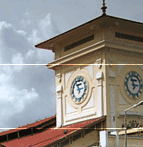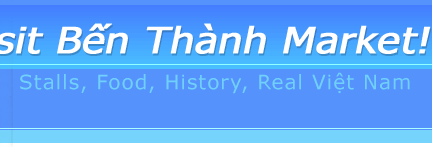Vietnam Traditional Markets Guide 2025 Cultural Heritage & Modern Commerce
Vietnam's traditional markets represent the soul of Vietnamese commerce and culture, serving as vibrant centers of community life for over 300 years. From the iconic Ben Thanh Market in Ho Chi Minh City to floating markets in the Mekong Delta, these marketplaces preserve ancient trading traditions while adapting to modern tourism and global commerce. Each vietnam market tells unique stories of regional culture, culinary heritage, and artisanal craftsmanship that define Vietnamese identity.
Vietnam Market Cultural Heritage & Historical Significance
Ancient Trading Traditions: Vietnamese markets evolved from floating river commerce in the 18th century, where merchants transported goods along waterways connecting rural producers with urban consumers. These early markets established the foundation for Vietnam's market culture, emphasizing personal relationships, seasonal rhythms, and community gathering spaces that persist in modern traditional markets.
French Colonial Influence: During the French colonial period (1858-1954), Vietnamese markets incorporated European architectural elements while maintaining Asian commercial practices. Ben Thanh Market, established in 1914, exemplifies this cultural fusion with its French colonial design housing traditional Vietnamese vendor arrangements and trading customs.
Modern Cultural Role: Contemporary Vietnam markets serve dual functions as authentic cultural experiences for tourists and essential economic centers for local communities. These markets preserve traditional Vietnamese values of relationship-building, seasonal eating, and artisanal craftsmanship while providing economic opportunities for thousands of families.
Premier Vietnam Traditional Markets
Ben Thanh Market (Ho Chi Minh City) - Vietnam's Most Iconic Market: Established in 1914, Ben Thanh Market stands as Vietnam's most internationally recognized marketplace, welcoming over 10,000 daily visitors. The market features over 3,000 vendor stalls offering authentic Vietnamese handicrafts, traditional textiles, premium coffee, and exceptional street food representing Southern Vietnamese cuisine at its finest.
Dong Xuan Market (Hanoi) - Northern Vietnam's Largest Traditional Market: Dating to 1889, this three-story marketplace covers 6,000 square meters and serves as Northern Vietnam's primary wholesale and retail center. The market specializes in textiles, electronics, and traditional Hanoi street food, offering insights into Northern Vietnamese commercial culture and culinary traditions.
Hoi An Central Market - UNESCO World Heritage Trading Experience: Located in the ancient trading port of Hoi An, this market preserves centuries-old commercial traditions in a UNESCO World Heritage setting. Vendors offer regional specialties including Cao Lau noodles, White Rose dumplings, and traditional Hoi An textiles unavailable elsewhere in Vietnam.
Mekong Delta Floating Markets - Unique Vietnam Market Experience
Cai Rang Floating Market (Can Tho): The Mekong Delta's largest floating market operates daily from 5:00 AM to 9:00 AM, featuring hundreds of boats selling fresh tropical fruits, vegetables, and regional specialties directly from agricultural areas. This traditional vietnam market experience showcases agricultural abundance and ancient river trading methods.
Cai Be Floating Market: A smaller, more intimate floating market experience offering authentic interactions with Mekong Delta farmers and producers. Early morning visits (6:00 AM - 8:00 AM) provide optimal viewing of traditional trading methods and seasonal agricultural products.
Regional Vietnam Market Specialties & Cultural Differences
Northern Vietnam Markets: Characterized by cooler-weather produce, heartier cuisine, and Chinese cultural influences. Markets feature root vegetables, warming spices, and traditional crafts reflecting mountainous geography and distinct seasonal changes.
Central Vietnam Markets: Known for imperial cuisine influences, spicy dishes, and sophisticated cultural traditions from the former royal capital of Hue. Markets emphasize complex flavors, artistic presentation, and refined craftsmanship reflecting centuries of royal patronage.
Southern Vietnam Markets: Feature tropical abundance, sweet flavors, and Khmer cultural influences. The warm climate supports year-round fresh produce, coconut-based dishes, and vibrant street food culture that attracts international visitors.
Vietnam Market Shopping Culture & Etiquette
Bargaining Traditions: Vietnamese market culture includes respectful bargaining as standard practice, typically starting negotiations at 50-70% of quoted prices. Successful bargaining requires patience, politeness, and understanding that price discussions strengthen vendor-customer relationships rather than create conflict.
Seasonal Market Rhythms: Vietnam markets reflect agricultural seasons, with tropical fruit abundance during summer months (April-September) and different vegetables during cooler seasons. Understanding seasonal availability enhances market experiences and provides better pricing on peak-season products.
Cultural Respect Guidelines: Photography requires vendor permission, especially for people and food preparation. Modest clothing shows cultural respect, and basic Vietnamese greetings ("Xin chào" - hello, "Cảm ơn" - thank you) create positive interactions with vendors and community members.
Vietnam's traditional markets offer unparalleled cultural immersion, combining authentic Vietnamese experiences with exceptional shopping opportunities. These vibrant marketplaces preserve centuries of trading tradition while providing modern visitors with genuine insights into Vietnamese daily life, culinary heritage, and artisanal craftsmanship that define this remarkable nation's cultural identity.
"We must send down the main-top-sail yard, sir. The band
is working loose and the lee lift is half-stranded. Shall I
strike it, sir?"
"Strike nothing; lash it. If I had sky-sail poles, I'd sway
them up now."
"Sir!�in God's name!�sir?"
"Well."
"The anchors are working, sir. Shall I get them inboard?"
"Strike nothing, and stir nothing, but lash everything. The
wind rises, but it has not got up to my table-lands yet. Quick,
and see to it.�By masts and keels! he takes me for the hunch-backed
skipper of some coasting smack. Send down my main-top-sail yard!
Ho, gluepots! Loftiest trucks were made for wildest winds, and
this brain-truck of mine now sails amid the cloud-scud. Shall
I strike that? Oh, none but cowards send down their brain-trucks
in tempest time. What a hooroosh aloft there! I would e'en take
it for sublime, did I not know that the colic is a noisy malady.
Oh, take medicine, take medicine!"
STUBB AND FLASK MOUNTED ON THEM, AND PASSING ADDITIONAL LASHINGS
OVER THE ANCHORS THERE HANGING.
Ben Thanh Market - The Definitive Guide -
Getting Here -
Opening Times -
Attractions -
Staying









